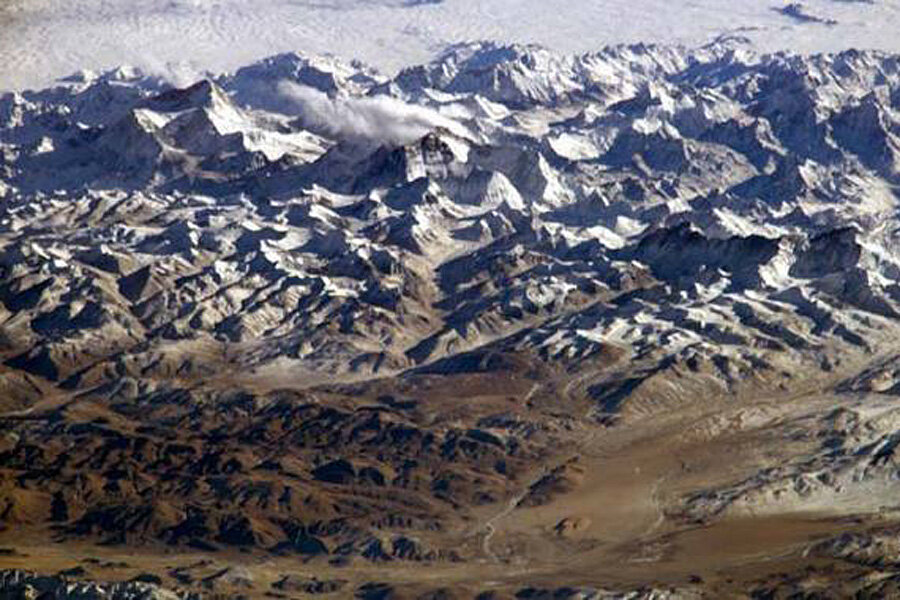Did Tibetans inherit their high-altitude genes from a different species?
Loading...
Genetic mutations from an extinct human lineage help Tibetans and Sherpas live at high altitudes, researchers say.
The new findings add to growing evidence that interbreeding with other human lineages provided genetic variations that helped modern humans adapt as they spread across the world.
As modern humans migrated out of Africa, they had to adapt to many new environments. One noteworthy adaptation was of Tibetans adjusting to the thin air of the Tibetan plateau, which at about 2.5 miles (4 kilometers) in altitude has oxygen levels just 60 percent that of air at sea level. For instance, when at high altitudes, women who come from low altitudes usually have problems with childbirth, such as preeclampsia, which is potentially dangerous high blood pressure during pregnancy. [High & Dry: Images of the Himalayas and Tibetan Plateau]
"Tibetans have a really good example of a human adaptation to a new environment," said study co-author Rasmus Nielsen, a population and evolutionary geneticist at the University of California, Berkeley.
Recent studies revealed how Tibetans adapted to high altitudes — a pattern of mutations in the gene EPAS1, which influences levels of hemoglobin, the protein in blood that carries oxygen around the body. Although most people experience a rise in hemoglobin levels at high altitudes, Tibetans only increase their hemoglobin levels a limited amount — too much hemoglobin in the blood can lead to a greater risk of heart disease.
To learn more about human evolution, Nielsen and his colleagues investigated how Tibetans might have developed their adaptation. Frustratingly, the research team's computer models could not at first explain how Tibetans evolved their pattern of EPAS1 mutations as quickly as they apparently did.
Now, the scientists find Tibetans apparently inherited this pattern of mutations, or haplotype, from a recently discovered extinct lineage of humans known as the Denisovans.
"Adapting to a new environment may take a long time, so sometimes it might have been easier for the ancestors of modern humans to pick up helpful mutations from another human lineage adapted to that environment, such as the Denisovans," Nielsen told Live Science. "This raises the possibility that such a process may have happened many, many other times in human evolution."
Although modern humans are the only surviving human lineage, others also once walked the Earth. These included Neanderthals, the closest extinct relatives of modern humans, and the Denisovans, the first evidence of which was discovered in Denisova Cave in southern Siberia in 2008.
Recent analysis of DNA from Denisovan fossils revealed the ancestors of modern humans apparently interbred with Denisovans, whose genetic footprint extended from Siberia to the Pacific Islands of Oceania. About 0.2 percent of DNA of mainland Asians and Native Americans is Denisovan in origin.
The researchers looked for the Tibetan pattern of EPAS1 mutations in 26 different modern human populations across the world, as well as in Neanderthal and Denisovan genomes. They found only Denisovans possessed this haplotype too, as did a small percentage of Han Chinese. This suggests the ancestors of Tibetans inherited this pattern of mutations either from Denisovans or relatives of Denisovans.
The researchers suggest this pattern of mutations might also exist in other Asian populations adapted to high altitudes. These include the Sherpas of Nepal and certain Mongolian populations.
Although some modern human groups in the Pacific Islands possess more Denisovan DNA than Tibetans, those groups do not possess the pattern of EPAS1 mutations seen in Tibetans. "We think modern humans inherited this haplotype from Denisovans a long time ago, but it was of more use to the Tibetans, and so spread among their population," Nielsen said. "In Pacific Islander groups such as Melanesians, this haplotype was probably not as useful, and so was not preserved over time."
The scientists cautioned these findings do not suggest that Tibetans inherited these genes from mythical creatures known as yetis, nor that Denisovans are yetis. "There's already been speculation that Denisovans are yetis on the Internet," Nielsen said.
Nielsen and his colleagues detailed their findings in the July 3 issue of the journal Nature.
Follow Live Science @livescience, Facebook & Google+. Original article on Live Science.
- Denisovan Gallery: Tracing the Genetics of Human Ancestors
- In Photos: Uncovering a New Human Species
- In Photos: Neanderthal Burials Uncovered
Copyright 2014 LiveScience, a TechMediaNetwork company. All rights reserved. This material may not be published, broadcast, rewritten or redistributed.





